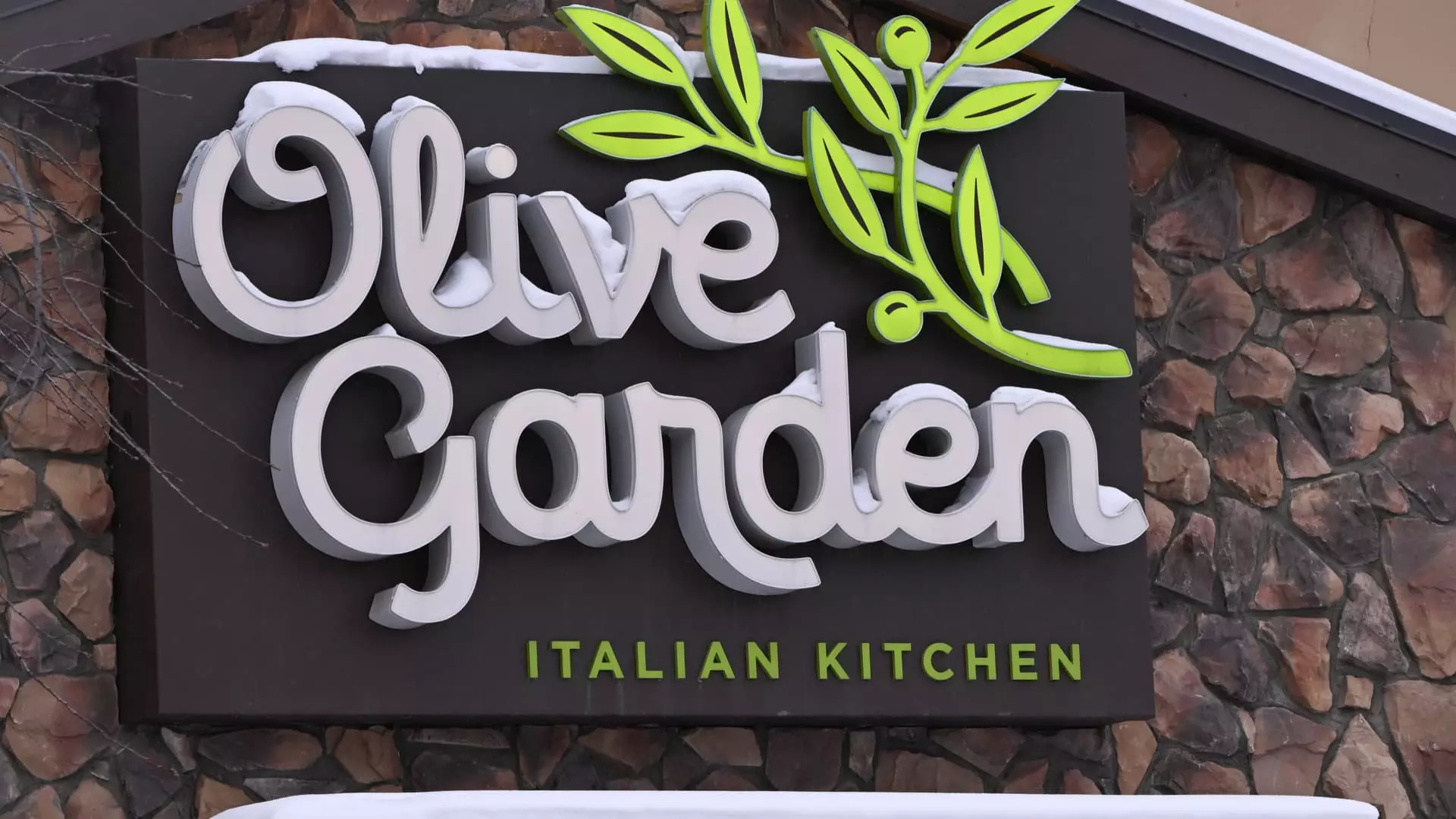Darden Restaurants, a cornerstone of the casual dining landscape, recently released disappointing sales figures that took many analysts by surprise. Although the company managed to surpass earnings expectations, the overall revenue fell short of Wall Street forecasts. This dissonance raises questions not only about their current performance but also about the company’s strategic direction in a challenging market. With a net income of $323.4 million for the fiscal third quarter, an increase compared to the previous year, one must wonder: Is this success a mere mirage hiding deeper issues?
What stands out from their report is the juxtaposition of a robust earnings per share of $2.80—a tick above the $2.79 anticipated—against the reality of a $3.16 billion revenue that is notably short of the expected $3.21 billion. Although shares rose by 5% following the announcement, this uptick can be seen as a fleeting moment of investor optimism rather than a secure recovery. Such volatility sparks skepticism about whether this “blip” is genuinely just a temporary setback or a precursor to more underlying issues.
Weather: A Convenient Scapegoat?
Executives attributed the sales decline primarily to adverse weather conditions, including cold temperatures and snowstorms, which evidently had a detrimental impact on foot traffic to their restaurants. However, this excuse feels like an oversimplification. Yes, winter can undoubtedly deter patrons from dining out, but persistent issues like menu pricing or outdated marketing strategies could also play pivotal roles.
In an era where numerous dining establishments successfully adapt to inclement weather through visionary strategies—think seasonal promotions or enhanced delivery options—Darden’s failure to pivot effectively raises eyebrows. They belatedly initiated a delivery partnership with Uber Direct at Olive Garden, a solution which has improved weekly sales. However, why did it take them so long to embrace this idea? Such delays reflect a lack of agility in a sector that’s increasingly influenced by rapid consumer behavior shifts.
Mixed Metrics: Olive Garden and LongHorn’s Underperformance
Two of the company’s flagship brands, Olive Garden and LongHorn Steakhouse, significantly underperformed expectations, casting a long shadow on the company’s reputation. With same-store sales growth of only 0.6% for Olive Garden, falling short of the anticipated 1.5%, and LongHorn’s dismal 2.6% growth against a predicted 5%, it’s difficult to remain optimistic about their future performance.
In this competitive landscape, the ability to innovate is crucial. While one may applaud Olive Garden for its new delivery services, the reliance on a single strategy is precarious. Consumers of all economic brackets are changing their dining preferences; so focusing on a wider variety of offerings could secure a broader customer base—something Darden appears to overlook in its rush to standardize service options.
The Reality of Fine Dining
Interestingly, Darden’s fine dining segment, encompassing established names like The Capital Grille and Ruth’s Chris Steak House, reported same-store sales declines of 0.8%. While it’s possible to editorialize that fine dining ought to be immune to the limitations of casual dining, recent consumer behavior reflects a shift away from fine dining experiences as individuals tighten their financial belts.
CFO Raj Vennam’s comments about “persistent check management post-holidays” indicate that even affluent diners are reconsidering their expenditures, opting for less pricey options. Fine dining cannot solely rely on high-quality offerings; it must cultivate an experience that feels essential rather than optional for today’s cost-conscious diners. How will Darden reclaim its footing in a sector that relies heavily on exclusivity and ambiance?
The Bigger Picture: Redefining Strategy Amid Competition
Darden’s projections for the fiscal year ahead seem hopeful, with forecasts of around $12.1 billion in revenue, hinting at potential recovery. However, let’s consider: is merely weathering the storm sufficient to appease investors and customers alike? Industry dynamics continually evolve, and complacency could spell disaster for a business that thrives on public perception and experience.
Their reliance on the results from Chuy’s, which will not be counted in same-store comparisons until much later, points to a potentially misleading optimism. Could Darden be masking quarterly weaknesses under the hopeful glimmer of future acquisitions? Recognizing the need for adaptive strategies over static models is paramount. The willingness to innovate, pivot, and listen to both consumers and market signals will ultimately determine whether Darden remains a staple in the restaurant industry or becomes a relic of past successes.

